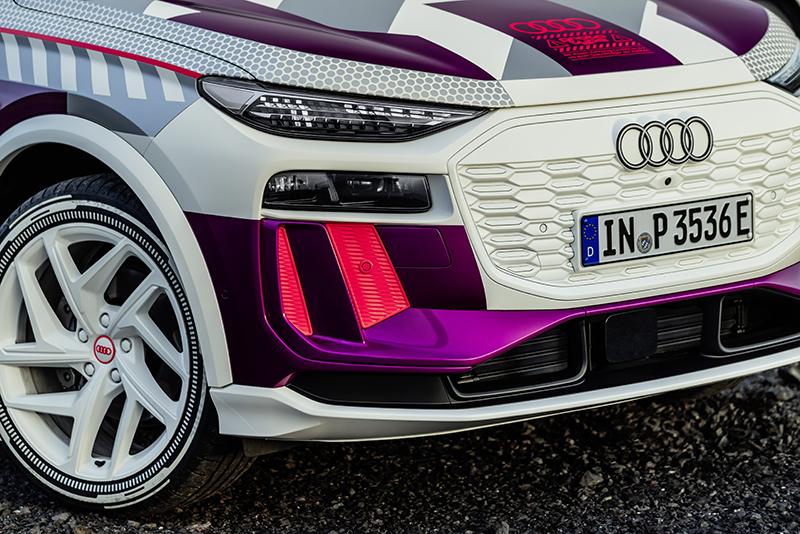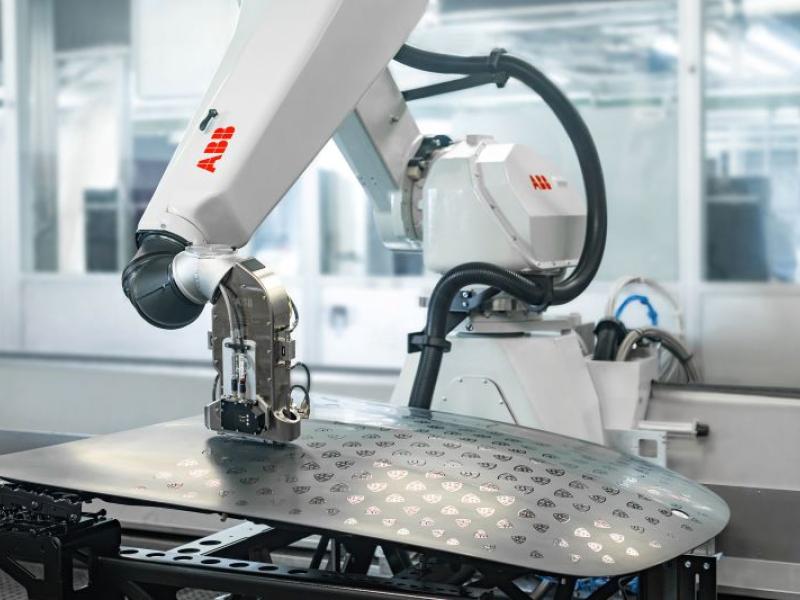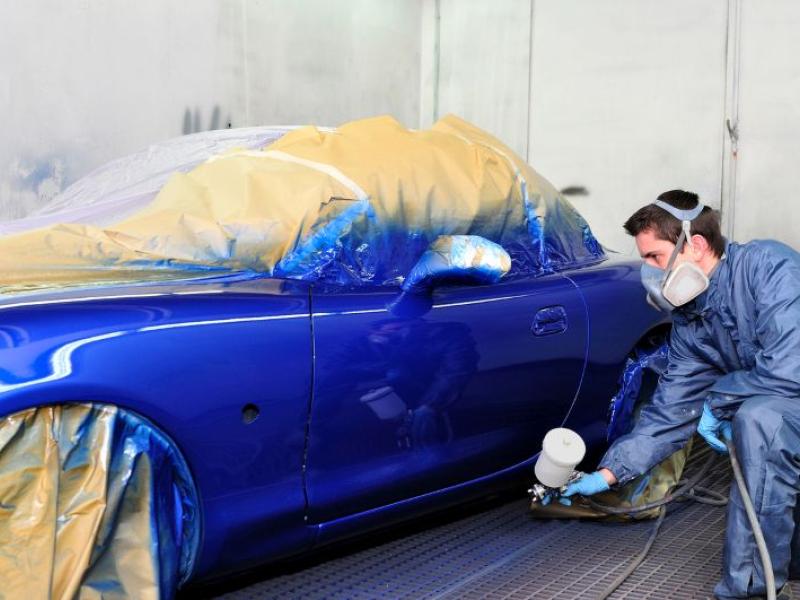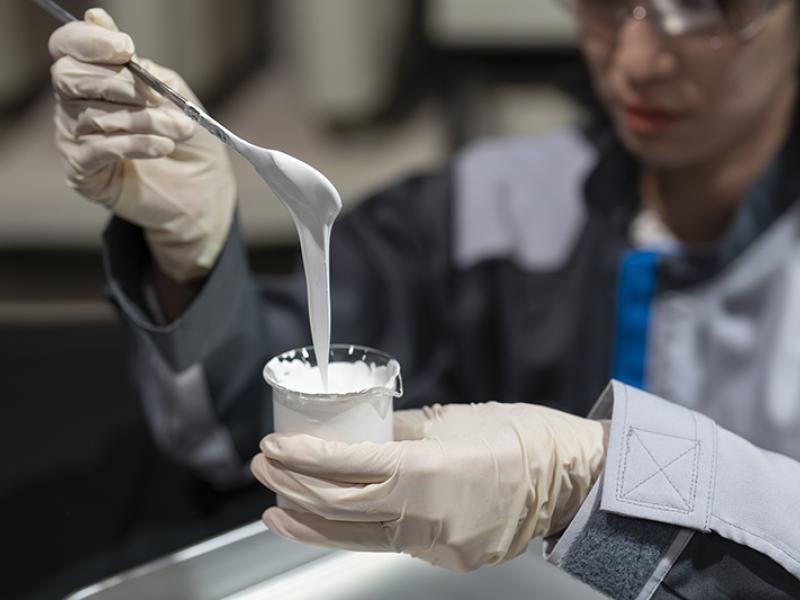Each design is one of a kind: Since unveiling the Audi e-tron in 2018, Audi has been fitting prototypes and one-off models with individual decals – most recently the S1 Hoonitron and the Formula 1 show car. They have already presented more than 20 vehicles featuring this special exterior, all designed by Marco dos Santos, who is responsible for Design Branding at Audi. His latest vision now decorates the Audi Q6 e-tron prototype. Marco dos Santos uses his latest decals to explain the philosophy behind the expressive design.
“Audi’s design language is taking the next step with the Q6 e-tron, and we wanted to make that clear in the decals,” says dos Santos. “A vehicle’s architecture and character are always unique and so is each individual decal design. It always starts with deciding which elements on the vehicle you want to highlight and emphasise.” While the new project also draws on previous design elements – such as the neon red colour also used on 2018 Audi e-tron – each new model also opens a new chapter. “At Audi, technology and design are intimately linked. As our technologies become more powerful and precise, this is also visible in our design, choice of materials, and storytelling,” dos Santos explains.
Shapes have smooth interflow to emphasise key elements.
In the case of the Audi Q6 e-tron, large graphics identify the vehicle as a prototype at first glance. Sharp lines, high contrast, and large-scale radial graphics in Gloss Fierce Fuchsia meet a detailed geometric mesh. The shapes flow smoothly into one another, emphasising key elements of the vehicle’s architecture.
The lower rocker panel is set off from the body in white, accentuating Audi’s e-tron philosophy, which places emissions-free driving at the heart of the design. The five-arm dynamic rims and the Singleframe that defines Audi’s look are also completely white. Neon red inlays, called the “e-tron Powerstripes”, emphasise the upper area of the rocker panel. As the seat of the battery, this is the beating heart of the fully electrified vehicle.
Another stylish neon red line runs around the rear and highlights the quattro blisters – the body contours that support the flat-sloping D-pillars. The blisters are reminiscent of the original.
Audi quattro and are a core element of Audi’s design DNA. “Making technology visible” is the name of this central design principle of the brand. A close-meshed grid runs along the upper edge of the body, giving the vehicle its profile.
“The decals have to work from 360 degrees.”
The decal design process is similar for each vehicle. Using detailed renderings from exterior designers, the team works together to decide which elements make up the model and which parts of the body to focus on. The aim is to abstractly reflect and visually reinforce the character of the model through decals.
That is when dos Santo’s design process really begins. With lots of hand-drawn sketches on paper, the vision is finally translated into the vehicle using image and graphics software, a process that takes several days due to the high level of meticulousness and precision required. “This is the moment of truth,” dos Santos elaborates. “Lines that looked straight before no longer appear straight on the body due to its many corners and edges.” During this phase of the work, dos Santos says, “a lot is thrown away, rethought, and redesigned. You never know which angle a person will see the Audi Q6 e-tron from for the first time. It’s not like in a movie with a camera, where you get to decide to where the focus starts and ends. The vehicle is a sculpture, and the decals must work from 360 degrees around the whole car.”
In the end, when the livery design has been perfectly matched to the car’s various angles, dos Santos will have created a custom suit for the model. “It only exists once in the whole world, and only for this exact model.”
The Q6 e-tron will be unveiled globally before the end of 2023.






